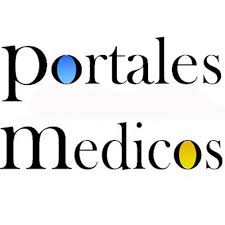Toxina botulínica a, una alternativa terapéutica en el manejo del dolor en patologías de cabeza y cuello
Resumen
La toxina botulínica ha sido ampliamente utilizada en distintas áreas desde la década de los 70’. El área estética es la más popular del momento, pero esta misma utilización permitió observar el potencial que tiene en el manejo de afecciones dolorosas como migrañas, dolor neuropático, fibrosis, neuralgias, incluso dolor post tratamiento con quimio o radioterapia luego de padecer cáncer de cabeza y/o cuello. Este articulo revisa el mecanismo en que funciona la toxina botulínica y los postulados sobre como tiene un efecto analgésico y su potencial para distintas patologías asociadas a dolor en cabeza y cuello.
Recibido22/06/2020
Aprobado:07/07/2020
Palabras clave
Texto completo:
PDFReferencias
Scott AB, Rosenbaum A, Collins CC. Pharmacologic weakening of extraocular muscles. Invest Ophthalmol.1973;12:924–7
Cote' TR, Mohan AK, Polder JA, Walton MK, et al. Botulinum toxin type A injections: adverse events reported to the US Food and Drug Administration in therapeutic and cosmetic cases. J Am Acad Dermatol. 2005;53:407–15.
Kostrzewa RM, Segura-Aguilar J. Botulinum neurotoxin: evolution from poison, to research tool—onto medicinal therapeutic and future pharmaceutical panacea. Neurotox Res. 2007;12:275–90
Jankovic J. Botulinum toxin: State of the art. Mov Disord. 2017;32(8):1131-8
Whitcup S. 2019. The History of Botulinum Toxins in Medicine: A Thousand Year Journey. Handbook of Experimental Pharmacology
IASP Terminology. 2017. Available from: https://www.iasp-pain.org/Education/Content.aspx?ItemNumber=1698 - Pain. Accessed May 2018
Cohen SP, Raja SN. Pain. In: Goldman L, Schafer AI, eds. Goldman-Cecil Medicine. New York: Elsevier Saunders; 2016
FDA approved drug products. Biologic license application: 10300, Company: Allergan. Available from: https://www.access-data.fda.gov/scripts/cder/daf/index.cfm?event=overview.process&ApplNo=103000. Accessed November 11, 2018.
Jabbari B. (Ed.) A disease- oriented approach. In Botulinum Toxin Treatment in Clinical Medicine; Springer: New York, NY, USA, 2018.
Aoki KR. Evidence for antinociceptive activity of botulinum toxin type A in pain management. Headache. 2003;43 (Suppl. S1), 9–15, doi:10.1046/j.1526-4610.43.7s.3.x.
Aurora SK, Silberstein SD, Lipton RB, Diener HC, Brin MF. OnabotulinumtoxinA for treatment of chronic migrane: Pooled results from the double-blind, randomized, placebo-controlled phases of the PREEMPT clinical program. Headache. 2010; 50:921–936, doi:10.1111/j.1526-4610.2010.01678.x.
Oh HM, Chung ME. Botulinum Toxin for Neuropathic Pain: A Review of the Literature. Toxins. 2015, 7;3127–3154, doi:10.3390/toxins7083127.
Park J, Park HJ. Botulinum Toxin for the Treatment of Neuropathic Pain. Toxins. 2017; 9:260, doi:10.3390/toxins9090260.
Safarpour Y, Jabbari B. Botulinum toxin treatment of pain syndromes -an evidence based review. Toxicon. 2018;147:120–128, doi:10.1016/j.toxicon.2018.01.017.
Shaw L, Bazzell AF, Dains JE. Botulinum Toxin for Side-Effect Management and Prevention of Surgical Complications in Patients Treated for Head and Neck Cancers and Esophageal. Cancer. J. Adv. Pract Oncol. 2019; 10: 40–52.
Melville JC, Stackowicz DJ, Jundt JS, Shum JW. Use of Botox (OnabotulinumtoxinA) for the Treatment of Parotid Sialocele and Fistula After Extirpation of Buccal Squamous Cell Carcinoma With Immediate Reconstruction Using Microvascular Free Flap: A Report of 3 Cases. J. Oral. Maxillofac. Surg. 2016; 74:1678–1686, doi:10.1016/j.joms.2016.01.038.
Xie S, Wang K, Xu T,Guo XS, Shan XF, Cai ZG. Efficacy and safety of botulinum toxin type A for treatment of Frey’s syndrome: Evidence from 22 published articles. Cancer Med. 2015;4: 1639–1650, doi:10.1002/cam4.504.
Matak I, Lackovic´ Z. Botulinum neurotoxin type A: Actions beyond SNAP-25? .Toxicology. 2015;335:79–84, doi:10.1016/j.tox.2015.07.003.
Nahabet E, Janis JE, Guyuron B. Neurotoxins: expanding uses of neuromodulators in medicine-Headache. Plast Reconstr Surg. 2015;136(5 Suppl):104S–110S.
Rohrich RJ, Janis JE, Fagien S, Stuzin JM. The cosmetic use of botulinum toxin. Plast Reconstr Surg. 2003;112(5 Suppl):177S-188S
Rizo J, Sudhof TC.Mechanics of membrane fusion. Nat Struct Biol. 1998;5:839–842.
Lacy DB, Tepp W, Cohen AC et al .Crystal structure of botulinum neurotoxin type A and implications for toxicity. Nat Struct Biol. 1998;10:898–902.
Edmunds CW, Keiper GF.Further studies on the action of botulinus toxin. JAMA. 1924; 83:495–502.
Rossetto O, Pirazzini M, Montecucco C. Botulinum neuro- toxins: Genetic, structural and mechanistic insights. Nat Rev Microbiol. 2014;12:535–549.
Cui M, Khanijou S, Rubino J, Aoki KR. Subcutaneous admin- istration of botulinum toxin A reduces formalin-induced pain. Pain 2004;107:125–133.
Pirazzini M, Rossetto O, Eleopra R, Montecucco C. Botulinum neurotoxins: Biology, pharmacology, and toxicology. Pharmacol Rev. 2017;69:200–235.
Kim HS, Lee HW, Kim WS, Ko YH. Systemic Epstein-Barr virus-negative mature natural killer-cell lymphoma with cutaneous and visceral involvement. APMIS. 2015;123:990–992.
Chuang YC, Yoshimura N, Huang CC, Wu M, Chiang PH, Chancellor MB. Intraprostatic botulinum toxin A injection inhibits cyclooxygenase-2 expression and suppresses prostatic pain on capsaicin induced prostatitis model in rat. J Urol. 2008;180:742–748.
Shin MC, Wakita M, Xie DJ, et al. Inhibition of membrane Na+ channels by A type botulinum toxin at femtomolar con- centrations in central and peripheral neurons. J Pharmacol Sci. 2012;118:33–42.
Devor M. Sodium channels and mechanisms of neuropathic pain. J Pain. 2006;7(1 Suppl 1):S3–S12.
Restani L, Antonucci F, Gianfranceschi L, Rossi C, Rossetto O, Caleo M. Evidence for anterograde transport and tran- scytosis of botulinum neurotoxin A (BoNT/A). J Neurosci. 2011;31:15650–15659.
Matak I., Bach-Rojecky L., Filipovic´ B., Lackovic´ Z. Behavioral and immunohistochemical evidence for central antinociceptive activity of botulinum toxin A. Neuroscience. 2011;186:201–207.
Fan C, Chu X, Wang L, Shi H, Li T. Botulinum toxin type A reduces TRPV1 expression in the dorsal root ganglion in rats with adjuvant-arthritis pain. Toxicon. 2017;133:116–122.
Matak I, Lackovic´ Z. Botulinum toxin A, brain and pain. Prog Neurobiol. 2014;119(120):39–59.
Pellett S, Yaksh TL, Ramachandran R. Current status and future directions of botulinum neurotoxins for targeting pain processing. Toxins (Basel). 2015;7:4519–4563.
Binder WJ, Brin MF, Blitzer A, Schoenrock LD, Pogoda JM. Botulinum toxin type A (BOTOX) for treatment of migraine headaches: an open- label study. Otolaryngol Neck Surg. 2000;123:669-676.
Binder WJ, Brin MF, Blitzer A, Schoenrock LD, Pogoda JM. Botulinum toxin type A (BOTOX) for treatment of migraine headaches: an open- label study. Otolaryngol Neck Surg. 2000;123:669-676.
Akaike N, Shin M-C, Wakita M, et al. Transsynaptic inhibition of spinal transmission by A2 botulinum toxin. J Physiol. 2013;591:1031-1043.
Bach-Rojecky L, Salkovic´-Petrisic´ M, Lackovic´ Z. Botulinum toxin type A reduces pain supersensitivity in experimental diabetic neuropathy:bilateral effect after unilateral injection. Eur J Pharmacol. 2010;633:10-14.
Montecucco C, Molgó J. Botulinal neurotoxins: revival of an old killer. Curr Opin Pharmacol. 2005;5:274-279.
Lee W, Shin T, Kim H, et al. Intrathecal administration of botulinum neurotoxin type A attenuates formalin-induced nociceptive responses in mice. Anesth Analg. 2011;112:228-235.
Coelho A, Oliveira R, Cruz F, Cruz C. Impairment of sensory afferents by intrathecal administration of botulinum toxin A improves neurogenic detrusor overactivity in chronic spinal cord injured rats. Exp Neurol. 2016;1(Pt B):159-166.
Do T, Hvedstrup J and Schytz H. Botulinum toxin: A review of the mode of action in migraine. Acta Neurologica Scandinavica. 2018; 137(5):442-451.
Chien C, Lee H, Wu C, Li P. Inhibitory effect of botulinum toxin type A on the NANC system in rat respiratory models of neurogenic inflammation. Arch Biochem Biophys. 2012;524:106-113.
Huang P, Khan I, Suhail M, Malkmus S, Yaksh T. Spinal botulinum neurotoxin B: effects on afferent transmitter release and nociceptive processing. PLoS One. 2011;6:e19126.
Merskey, H.B.N. (Ed.) Classification of Chronic Pain: Descriptions of Chronic Pain Syndromes and Definitions of Pain Terms, 2nd ed.; IASP Press: Seattle, WA, USA, 1994.
Reeh, PW, Kress M. Molecular physiology of proton transduction in nociceptors. Curr. Opin. Pharmacol. 2001;1: 45–51
Park J and Chung M. Botulinum Toxin for Central Neuropathic Pain. Toxins.2018; 10(6):224
Lenz FA,Kwan HC,Dostrovsky JO, Tasker RR. Characteristics of the bursting pattern of action potentials that occurs in the thalamus of patients with central pain. Brain Res. 1989;496: 357–360.
Gerke MB, Duggan AW, Xu L, Siddall PJ. Thalamic neuronal activity in rats with mechanical allodynia following contusive spinal cord injury. Neuroscience. 2003;117: 715–722.
Quiton RL, Masri R, Thompson SM, Keller A. Abnormal activity of primary somatosensory cortex in central pain syndrome. J. Neurophysiol. 2010; 104: 1717–1725.
Jiang L, Voulalas P, Ji Y, Masri R. Post-translational modification of cortical GluA receptors in rodents following spinal cord lesion. Neuroscience. 2016; 316: 122–129.
McMahon HT, Foran P, Dolly JO, Verhage M, Wiegant VM, Nicholls DG. Tetanus toxin and botulinum toxins type A and B inhibit glutamate, gamma-aminobutyric acid, aspartate, and met-enkephalin release from synaptosomes. Clues to the locus of action. J. Biol. Chem. 1992; 267: 21338–21343.
Welch MJ, Purkiss JR, Foster KA. Sensitivity of embryonic rat dorsal root ganglia neurons to Clostridium botulinum neurotoxins. Toxicon. 2000; 38: 245–258.
Durham PL, Cady R, Cady R. Regulation of calcitonin gene-related peptide secretion from trigeminal nerve cells by botulinum toxin type A: Implications for migraine therapy. Headache. 2004;44: 35–42; discussion 33–42.
Stubblefield MD. Radiation fibrosis syndrome. In: Cooper G, editor. Therapeutic uses of Botox. Totowa: Humana Pr.2007:19-38.
Stubblefield M, Levine A, Custodio C and Fitzpatrick T. The Role of Botulinum Toxin Type A in the Radiation Fibrosis Syndrome: A Preliminary Report. Archives of Physical Medicine and Rehabilitation.2008; 89(3): 417-421.
Libshitz HI, DuBrow RA, Loyer EM, Charnsangavej C. Radiation change in normal organs: an overview of body imaging. Eur Radiol. 1996;6:786-95.
Portlock CS, Boland P, Hays AP, Antonescu CR, Rosenblum MK. Nemaline myopathy: a possible late complication of Hodgkin’s disease therapy. Hum Pathol. 2003;34:816-8.
Johansson S, Svensson H, Larsson L, Denekamp J. Brachial plexopathy after postoperative radiotherapy of breast cancer patients: a long-term follow-up. Acta Oncol. 2000;39:373-82.
New P. Radiation injury to the nervous system. Curr Opin Neurol. 2001;14:725-34.
Delanian S, Lefaix JL. Current management for late normal tissue injury: radiation-induced fibrosis and necrosis. Semin Radiat Oncol. 2007;17:99-107
Johansson S, Svensson H, Denekamp J. Timescale of evolution of late radiation injury after postoperative radiotherapy of breast cancer patients. Int J Radiation Oncol Biol Phys. 2000;48:745-50.
Kung TA, Guyuron B, Cederna PS. Migraine surgery: A plas- tic surgery solution for refractory migraine headache. Plast Reconstr Surg. 2011;127:181–189.
Janis JE, Barker JC, Palettas M. Targeted peripheral nerve- directed onabotulinumtoxin A injection for effective long- term therapy for migraine headache. Plast Reconstr Surg Glob Open. 2017;5:1270.
Hehr J, Schoenbrunner A and Janis J. The Use of Botulinum Toxin in Pain Management. Plastic and Reconstructive Surgery. 2020;145(3):629-636.
Gazerani P, Pedersen N, Staahl C, Drewes A, Arendt-Nielsen L. Subcutaneous Botulinum toxin type A reduces capsaicin-induced trigeminal pain and vasomotor reactions in human skin. Pain. 2009;141:60-69.
Zhang X, Strassman AM, Novack V, Brin MF, Burstein R. Extracranial injections of botulinum neurotoxin type A inhibit intracranial meningeal nociceptors’ responses to stimulation of TRPV1 and TRPA1 channels: are we getting closer to solving this puzzle? Cephalalgia. 2016;36:875-886.
Aurora SK, Gawel M, Brandes JL, Pokta S, VanDenburgh AM. Botulinum toxin type A prophylactic treatment of episodic migraine: a randomized, double-blind, placebo-controlled exploratory study. Headache. 2007;47:486-499.
Dodick DW, Turkel CC, DeGryse RE, et al. OnabotulinumtoxinA for treatment of chronic migraine: pooled results from the double-blind, randomized, placebo-controlled phases of the PREEMPT clinical program. Headache. 2010;50:921-936.
Schmitt WJ, Slowey E, Fravi N, Weber S, Burgunder JM. Effect of botulinum toxin A injections in the treatment of chronic tension-type headache: a double-blind, placebo-controlled trial. Headache. 2001;41:658-664.
Rollnik JD, Tanneberger O, Schubert M, Schneider U, Dengler R. Treatment of tension-type headache with botulinum toxin type A: a double-blind, placebo-controlled study. Headache. 2000;40:300-305.
ShehataHS,El-TamawyMS,ShalabyNM,RamzyG.Botulinum toxin-type A: Could it be an effective treatment option in intractable trigeminal neuralgia?. J Headache Pain. 2013;14:92.
Meng F, Peng K, Yang JP, Ji FH, Xia F, Meng XW. Botulinum toxin-A for the treatment of neuralgia: A systematic review and meta-analysis. J Pain Res. 2018;11:2343–2351.
The International Classification of Headache Disorders, 3rd edition. Cephalalgia. 2018;38:1–211.
Bratbak DF, Nordgård S, Stovner LJ, et al. Pilot study of sphe- nopalatine injection of onabotulinumtoxin A for the treatment of intractable chronic migraine. Cephalalgia. 2017;37:356–364.
Yoshida K. Sphenopalatine Ganglion Block with Botulinum Neurotoxin for Treating Trigeminal Neuralgia Using CAD/CAM–Derived Injection Guide. Journal of Oral & Facial Pain and Headache. 2020;34 (2):135-140
Cella DF, Bonomi AE. Measuring quality of life: 1995 update. Oncology (Williston Park). 1995;9(11 Suppl):47-60.
Stenson KM, MacCracken E, List M, et al: Swallowing function in patients with head and neck cancer prior to treatment. Arch Otolaryngol Head Neck Surg.2000; 126:371- 377.
List M, Bilir S. Functional outcomes in head and neck cancer. Seminars in Radiation Oncology. 2004;14(2):178-189
Neufeld NJ, Elnahal SM, Alvarez RH. Cancer pain: A review of epidemiology, clinical quality and value impact. Future Oncol. 2017; 13: 833–841, doi:10.2217/fon-2016-0423.
Schreiber KL ,Kehlet H, Belfer I, Edwards RR. Predicting, preventing and managing persistent pain after breast cancer surgery: The importance of psychosocial factors. Pain Manag. 2014;4:445–459, doi:10.2217/pmt.14.33.
Stubblefield M. Radiation Fibrosis Syndrome: Neuromuscular and Musculoskeletal Complications in Cancer Survivors. PM&R. 2011;3(11):1041-1054
Fisher J, Scott C, Stevens R, Marconi B, Champion L, Freedman GM, Asrari F, Pilepich MV, Gagnon JD, Wong G. Randomized phase III study comparing best supportive care to Biafine as a prophylactic agent for radiation-induced skin toxicity for women undergoing breast irradiation: Radiation Therapy Oncology Group [RTOG] 97–13. Int. J. Radiat. Oncol. Biol. Phys. 2000;48: 1307–1310.
Chargari C, Fromantin I, Kirova YM. Importance of local skin treatments during radiotherapy for prevention and treatment of radio-induced epithelitis. Cancer Radiother. 2009;13: 259–266.
Kirova YM, Fromantin I, De Rycke Y, Fourquet A, Morvan E, Padiglione S, Falcou MC, Campana F, Bollet MA. Can we decrease the skin reaction in breast cancer patients using hyaluronic acid during radiation therapy-results of phase III randomised trial. Radiother Oncol. 2011; 100: 205–209.
Fleming JA, O’Connor BD. Use of lidocaine patches for neuropathic pain in a comprehensive cancer center. Pain Res. Manag. 2009; 14: 381–388.
Mittal S and Jabbari B.. Botulinum Neurotoxins and Cancer—A Review of the Literature. Toxins. 2020; 12(1):32.
Mailly M, Benzakin S, Chauvin A, Brasnu D, Ayache D. Radiation-induced head and neck pain: Management with botulinum toxin a injections. 2019;23(4):312-315.
Bach C, Wagner I, Lachiver X, Baujat B, Chabolle F. Botulinum toxin in the treatment of post-radiosurgical neck contracture in head and neck cancer: A novel approach. European Annals of Otorhinolaryngology, Head and Neck Diseases. 2012;129(1):6-10
Mittal S, Machado D, Jabbari B. OnabotulinumtoxinA for Treatment of Focal Cancer Pain After Surgery and/or Radiation. Pain Medicine. 2012;13(8):1029-1033
Van Daele D, Finnegan E, Rodnitzky R, Zhen W, McCulloch T, Hoffman H. Head and Neck Muscle Spasm After Radiotherapy. Archives of Otolaryngology–Head & Neck Surgery. 2002;128(8):956.
Dana M, Cohen M, Morbize J, Marandas P, Janot F, Bourhis J. Botulinum toxin for radiation-induced facial pain and trismus. Otolaryngology–Head and Neck Surgery. 2008;138(4):459-463.
Vezdrevanis, K. Prostatic carcinoma shrunk after intraprostatic injection of botulinum toxin. Urol. J. 2011; 8: 239–241.
Ulloa F, Gonzàlez-Juncà A, Meffre D, Barrecheguren PJ, Martínez-Mármol R, Pazos I, Olivé N, Cotrufo T, Seoane J, Soriano E. Blockade of the SNARE protein syntaxin 1 inhibits glioblastoma tumor growth. PLoS ONE. 2015; 10: e0119707, doi:10.1371/journal.pone.0119707.
He D, Manzoni A, Florentin D, Fisher W, Ding Y, Lee M, Ayala G. Biologic effect of neurogenesis in pancreatic cancer. Hum. Pathol. 2016; 52: 182–189, doi:10.1016/j.humpath.2016.02.001.
Karsenty G, Rocha J, Chevalier S, Scarlata E, Andrieu C, Zouanat FZ, Rocchi P, Giusiano S, Elzayat EA, Corcos J. Botulinum toxin type A inhibits the growth of LNCaP human prostate cancer cells in vitro and in vivo. Prostate 2009; 69: 1143–1150, doi:10.1002/pros.20958.
Nam HJ, Kang JK, Chang JS, Lee MS, Nam ST, Jung HW,Kim SK, Ha EM, Seok H, Son SW et al. Cells transformed by PLC-gamma 1 overexpression are highly sensitive to clostridium difficile toxin A-induced apoptosis and mitotic inhibition. J. Microbiol. Biotechnol. 2012, 22: 50–57, doi:10.4014/jmb.1107.07018.
Proietti S, Nardicchi V, Porena M, Giannantoni A. Attività della tossina botulinica A in linee cellulari di cancro prostatico [Botulinum toxin type-A toxin activity on prostate cancer cell lines]. Urologia. 2012;79: 135–141, doi:10.5301/RU.2012.9254.
Bandala C, Perez-Santos JL, Lara-Padilla E, Delgado Lopez G, Anaya-Ruiz M. Effect of botulinum toxin A on proliferation and apoptosis in the T47D breast cancer cell line. Asian Pac. J. Cancer Prev. 2013; 14: 891–894, doi:10.7314/apjcp.2013.14.2.891.
Bandala C, Cortés-Algara AL, Mejía-Barradas CM, Ilizaliturri-Flores I, Dominguez-Rubio R, Bazán-Méndez et al. Botulinum neurotoxin type A inhibits synaptic vesicle 2 expression in breast cancer cell lines. Int. J. Clin. Exp. Pathol. 2015; 8: 8411–8418.
Rust A, Leese C, Binz T, Davletov B. Botulinum neurotoxin type C protease induces apoptosis in differentiated human neuroblastoma cells. Oncotarget 2016; 7: 33220–33228, doi:10.18632/oncotarget.8903
Huang X, Wheeler MB, Kang YH, Sheu L, Lukacs GL, Trimble WS, Gaisano HY. Truncated SNAP-25 (1-197), like botulinum neurotoxin A, can inhibit insulin secretion from HIT-T15 insulinoma cells. Mol. Endocrinol. 1998; 12:1060–1070, doi:10.1210/mend.12.7.0130.
Hajighasemlou S, Alebouyeh M, Rastegar H, Manzari MT, Mirmoghtadaei M, Moayedi B et al. Preparation of Immunotoxin Herceptin Botulinum and Killing Effects on Two Breast Cancer Cell Lines. Asian Pac. J. Cancer Prev. 2015;16: 5977– 5981, doi:10.7314/apjcp.2015.16.14.5977.
Cheng YT, Chung YH, Kang HY, Tai MH, Chancellor MB, Chuang YC. OnobotulinumtoxinA Has No Effects on Growth of LNCaP and PC3 Human Prostate Cancer Cells. Low. Urin. Tract Symptoms. 2013; 5: 168–172, doi:10.1111/luts.12003.
Ansiaux R, Gallez B. Use of botulinum toxins in cancer therapy. Expert Opin. Investig. Drugs. 2007; 16: 209–218, doi:10.1517/13543784.16.2.209
Coarfa C, Florentin D, Putluri N, Ding Y, Au J, He D, Ragheb A, Frolov A, Michailidis G, Lee M et al. Influence of the neural microenvironment on prostate cancer. Prostate. 2018;78: 128–139, doi:10.1002/pros.23454.
DOI: https://www.doi.org/10.53766/AcBio/Se encuentra actualmente indizada en: | |||
 |  |  | |
  |  |  |  |
 |  |  |  |
 |  |  | |
![]()
Todos los documentos publicados en esta revista se distribuyen bajo una
Licencia Creative Commons Atribución -No Comercial- Compartir Igual 4.0 Internacional.
Por lo que el envío, procesamiento y publicación de artículos en la revista es totalmente gratuito.




